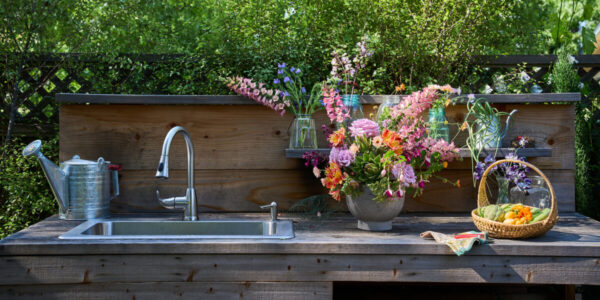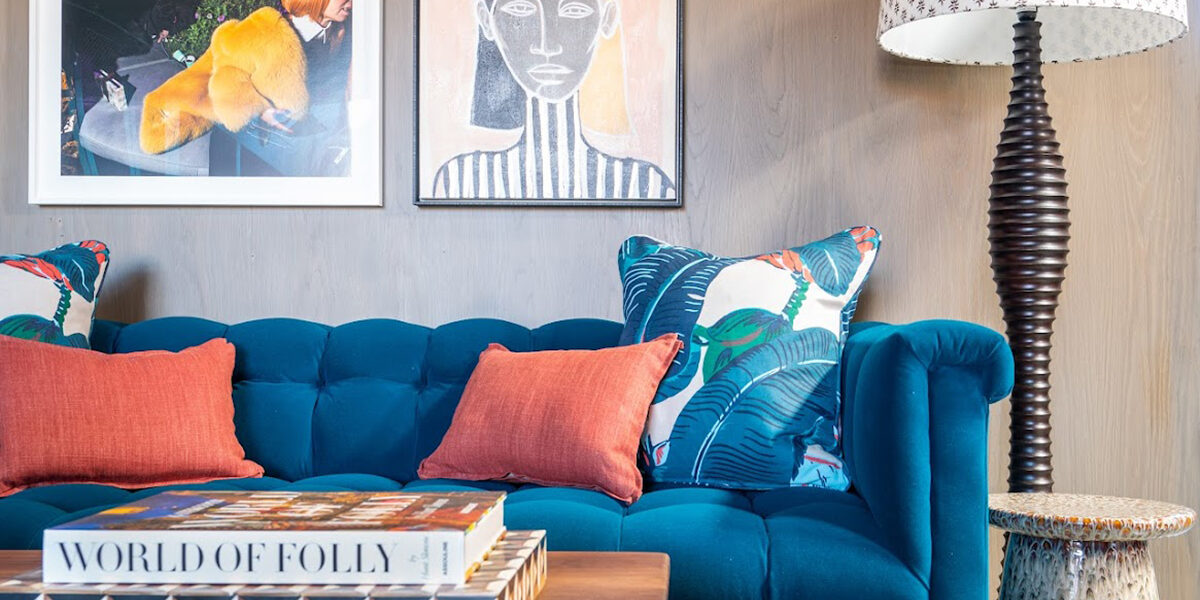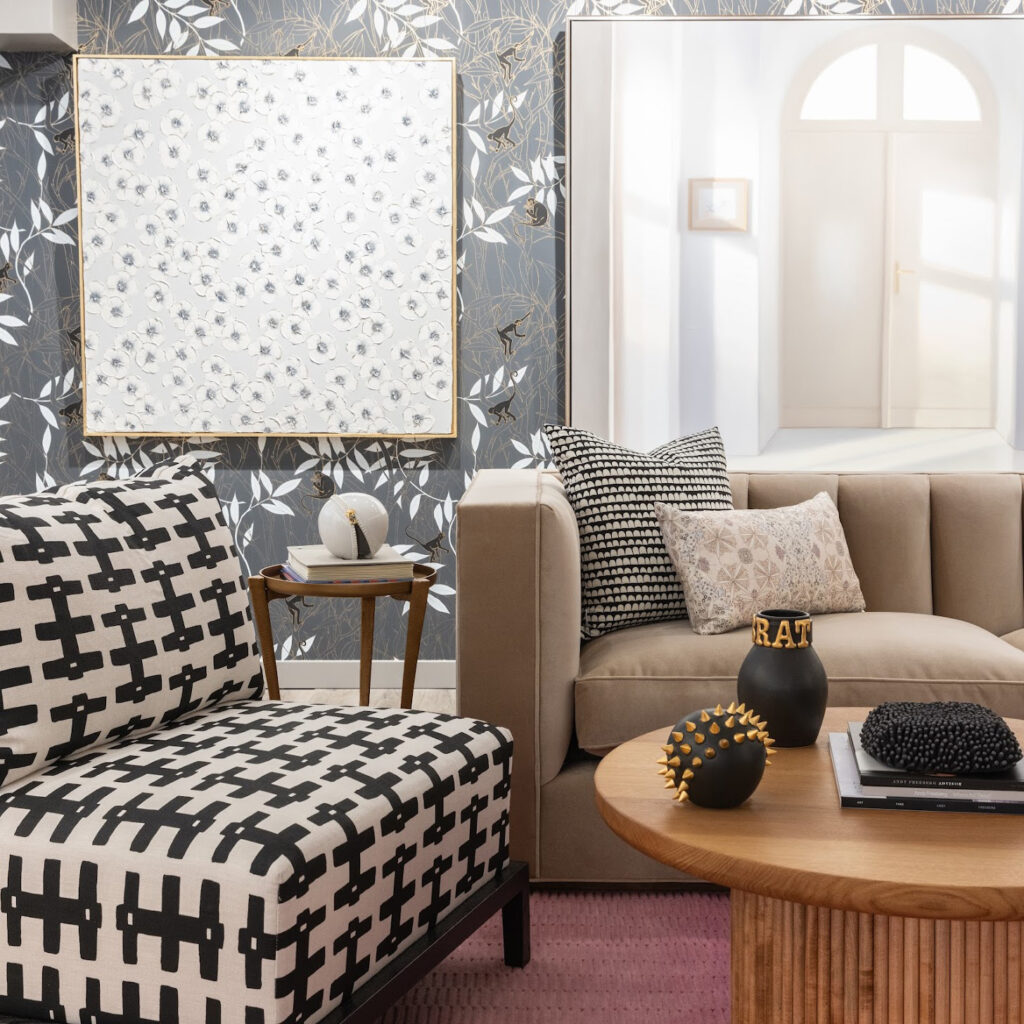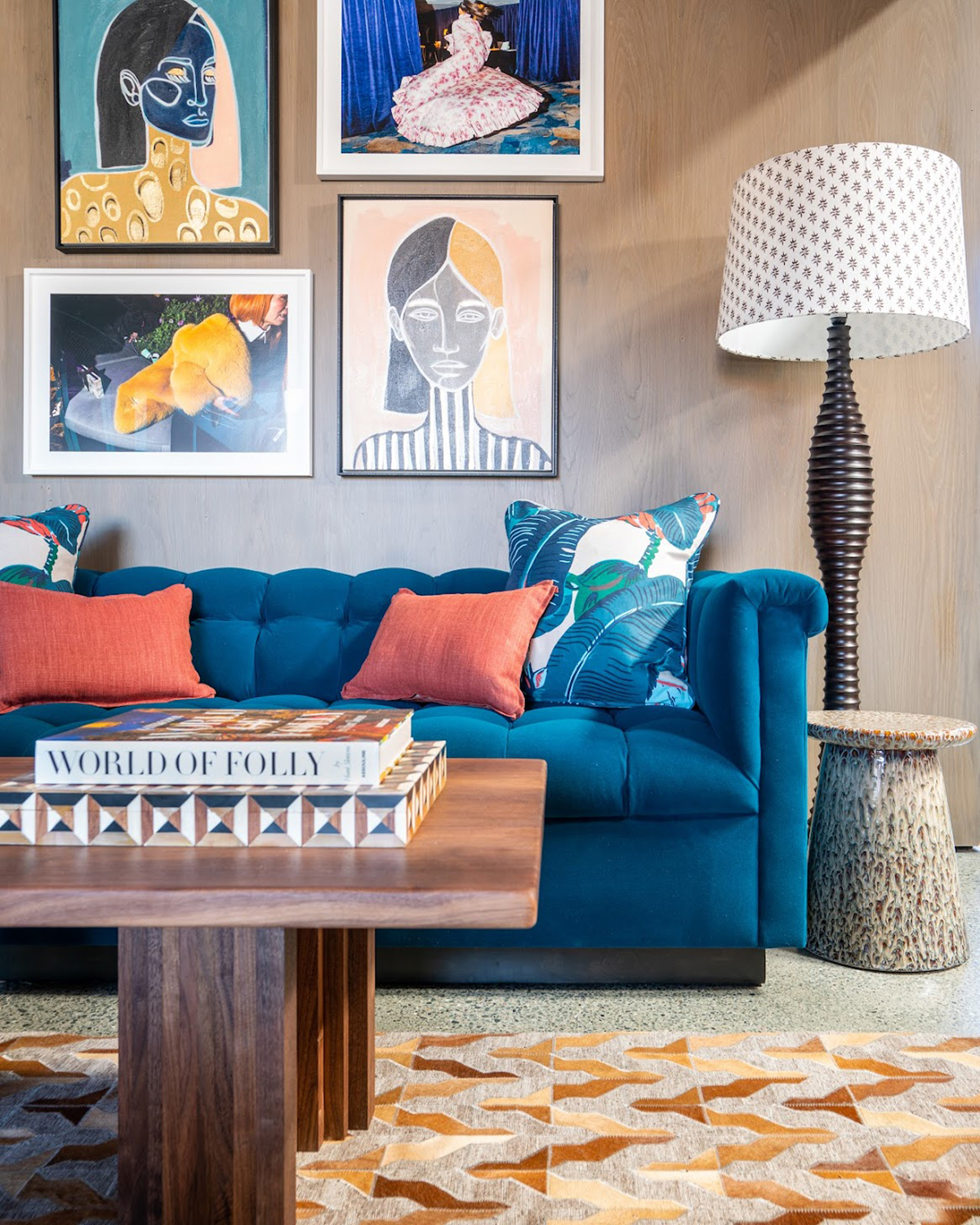
The 8 Dos and Don’ts of Mixing Patterns in Your Home
How seemingly opposite patterns, colors, and textures work together to complement your space.

Everyone from modern art aficionados to coastal grandmothers (and yes, even those who identify as both!) can benefit from exploring the patterns and textures that will work together to elevate your home. Nancy Evars of Evars Collective and DECORATE by Nancy Evars in the San Francisco Bay Area has nearly 20 years of experience as a professional interior designer and tastemaker, and she’s curated a list of her dos and don’ts for giving rooms a more finished look.
“Think of it as more like layering, as opposed to mixing,” Evars says. “Early in my career, I was very much focused on how to mix all of it together. And then the more experience I got—and the more experimenting I did in my own home—I really approached it more from a layering perspective.”
Ready to change up a room in your home? Here’s everything Evars wants you to know about what to do (and what not to do) while decorating:
DO: Use Patterns with Varying Scales
“When you’re approaching patterns in your home, it can be a little scary, so I usually recommend to my clients: start small,” she says. “Throw pillows are a great place to get your feet wet in mixing patterns. So that could look like a larger stripe as the back pillow and maybe a smaller medallion pattern in the front. Or you could do a floral with a stripe.”
The most important thing is to think about the “scale” of the pattern, according to Evars. A tried-and-true mix is a floral and some sort of geometric design, like stripes. With that suggestion in mind, a large-scale pattern could be a big, bold stripe, and you could pair it with a smaller-scale pattern like a print with smaller flowers all over it.
“I love florals, and I think they are being done in more contemporary ways than they have in the past,” she says. “And even if you are drawn more to that sort of grandmillennial look, there are some really cool floral patterns that either could be a throwback but at the same time feel a little bit contemporary.”

Courtesy of Nancy Evars of Evars Collective
DO: Find Cohesion in Colorways
Color can serve as a foundation for your design decisions, and it can inform the patterns you ultimately select for any space in your home. When you pull different colors and shades from a pattern, there’s a lot more to play with for accents like throw pillows, lampshades, and more decor items. In her own home, Evars says her family room features a combination of blues and browns—including camel, caramel, cream, and light blue.
DON’T: Layer Similar Fabrics
While it might be tempting to collect fabrics that look similar to each other, this can contribute to that one-dimensional aesthetic. Per Evars, one fabric combo she would avoid is velvet and mohair together. They are strong individually, but have too many commonalities to provide any contrast in your interior design.
DO: Think of Wallpaper and Other Decor as Layers
You may think fabrics on pillows and other decor are the only way to “layer,” there’s so much more to consider—especially when it comes to your wallpaper choices.
“Whether it’s pattern or texture, wallpaper has been and will continue to have its moment,” Evars says, adding that a lot of her clients are experimenting with eye-catching wallpaper in smaller rooms. Textured wallpaper, like grasscloth, is another popular trend Evars has noticed, and she’s even installed it in her own home.
In addition to wallpaper, Evars also loves adding a unique lampshade, customizing a chair or pillow with a contrast welt, or investing in a rug with a high-low pile pattern.
DON’T: Match the Textures in a Nearby Room
Picking wallpaper for rooms in your home comes with a warning, though: “If you’re adding wallpaper in multiple rooms in your house, just make sure that it doesn’t read so similar as the room next to it,” Evars says. In her home, Evars has a thicker lilac grasscloth wallpaper in her primary bedroom and a softer gray grasscloth wallpaper in her office.

Courtesy of Nancy Evars of Evars Collective
DO: Mix Wallpaper with Artwork
“Artwork really looks elevated and finished on top of a wallpaper,” Evars says, remembering a client who thought she had to choose one or the other. “I pushed her out of her comfort zone and we did quite a few wallpapers for her, and then we added the art on top. The art can really play up the wallpaper, or blend in with it.”
Another misconception about adding artwork to your home? Don’t worry about coordinating styles. As an example, a traditional-style room can find an unexpected complement in a modern art piece.
“I think that juxtaposition of modern with traditional and that sort of tension that art can create in a room is really important to adding all of those layers,” Evars says.
DON’T: Stick to One Medium of Art in a Room
Because art is so personal, Evars says anything that speaks to you should go in the room. Many of the “rules” to layering patterns also apply to the type of artwork you bring into your space: It’s all about creating contrast.
“You want to mix mediums if you’re putting a lot of art in one room,” she says. “Maybe photography and canvas, or 3D—you don’t want it all to be one medium in one room.”

Courtesy of Nancy Evars of Evars Collective
DO: Always Edit
Both personally and professionally, Evars says she’s constantly editing spaces and encourages interior design buffs and newbies to do the same. If there’s a fabric with a pattern or colors that are better suited for summer, you can always “edit” the look of your space at the change of season. Or if you want to change up the artwork in your home, you can always try adding it to a different room.
“What I always tell clients, too, is live with it for a while, and then after a couple years move it to another space and it’ll feel like a new piece of art,” Evars says.
People might be concerned about a room feeling or looking too busy. If that’s the case, you can also perform an “edit” by adding any piece of decor to a room and removing something else.
“Don’t beat yourself up over having to edit once you do place these patterns,” Evars says. “Feel free to edit along the way.”
